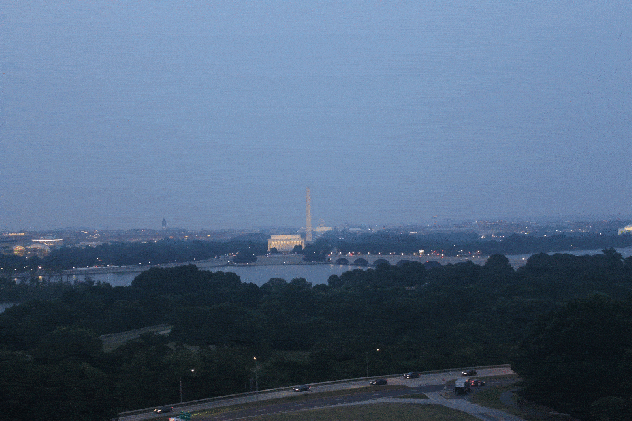New York City is seeing positive signs of haze clearing up as the Northeast is still dealing with bad quality of air.
New York City is seeing positive signs of haze clearing up as the Northeast is still dealing with bad quality of air.

New York City resembled an alien world this past week as thick smoke from wildfires burning in Canada was blown across the Northeast, causing air quality to reach dangerous levels.
Millions across Pennsylvania, New Jersey and New York who also experienced some of the worst air quality can breathe a sigh of relief as AccuWeather forecasters say the unhealthy conditions are about to improve.
“We will finally get a break from the pattern this weekend as the storm responsible for bringing the wildfire smoke south from Canada finally begins to move away,” said AccuWeather Meteorologist Alex DaSilva.

However, forecasters warn that more smoky spells are possible in the near future and could periodically make appearances throughout the summer months in the Northeast.

Further improvements to the air quality are in the offing as a new storm system tracks across the Midwest, Northeast and parts of Canada.
“Air quality during most of the next week should be much better than this week,” said DaSilva.
The rain and shift in the winds with the upcoming storm will help rid the Midwest and Northeast of any lingering smoke from the fires burning in Quebec.

Rain from the storm will also help areas of the Midwest and Northeast where a flash drought has developed. Weeks of abnormally dry conditions have caused lawns to turn brown and pockets of moderate drought across the regions, according to the U.S. Drought Monitor.
Although this storm alone will not be enough to erase the drought conditions, it will be a step in the right direction, forecasters say.
Some rain is also predicted in the areas of Quebec where wildfires have been raging.

“While beneficial rain in southern Quebec is forecast, the rainfall will likely not be enough to completely extinguish the fires,” said DaSilva.

Many of the fires are burning in remote areas of Quebec that are hard to reach, so any help from Mother Nature in the form of rain will be welcomed to reduce the plumes of smoke and associated poor air quality.
The upcoming relief may be temporary as the wildfires continue to burn and winds shift once again.
As the early-week storm moves away, winds blowing from the north could fan the flames of the wildfires in Canada and direct the smoke back over the Northeast, according to AccuWeather meteorologists.
“While the air quality is likely to not be as bad as what was experienced this week due to the rainfall early next week, poor air quality can once again be a problem for millions across the Northeast,” said DaSilva about the incoming weekend.
Anyone who needs to do yard work around their home may want to consider doing so during the first half of the week before the chance for poor air quality returns during the second half of the week.
Even though the air quality later next week is currently not expected to be as bad as it was this past Tuesday, Wednesday and Thursday, it could still reach dangerous levels that are unhealthy for individuals who spend extended periods of time outside.
AccuWeather meteorologists say that smoke could make more appearances in the sky over the eastern U.S. this summer, especially as the wildfire season ramps up in the West.
“Wildfire smoke this summer will not only depend on if there are fires actively burning but also the storm track and wind direction,” said DaSilva.
Most of the smoke from fires across the West Coast, Rocky Mountains and Canada is typically higher in the atmosphere by the time it reaches the Midwest and Northeast. However, wildfires that ignite closer to the regions, such as those in Quebec, will have more of an influence on the lower levels of the atmosphere.
“If we get more slow-moving storms that move through, we can have more smoke pulled into the United States for prolonged periods of time once again,” said DaSilva.

Farther west, the peak season will likely be between July and September over the Pacific Northwest and most of the Rocky Mountains, while fire activity will not peak in most of California until September into November.
Produced in association with AccuWeather
Edited by Alberto Arellano and Jessi Rexroad Shull

